Dry Eye – Keratitis Sicca – KCS
in Dogs
An Introduction
The condition of ‘Dry Eye' (Keratitis Sicca – Keratoconjunctivitis Sicca) is that in which the tear glands are damaged by an autoimmune process and tear production is reduced or ceases. It is seen more commonly in some breeds (e.g. West Highland White Terriers and Cavalier King Charles Spaniels) than in the general dog population. This means that there are breed predispositions.
 Dry eye can be detected by use of the Schirmer Test, which is basically putting an absorbent paper strip in the angle of the eye and measuring how far moisture will affect the strip. Clinically, an early sign is the regular accumulation of mucus across the front of the eye, instead of it being washed to the edge.
Dry eye can be detected by use of the Schirmer Test, which is basically putting an absorbent paper strip in the angle of the eye and measuring how far moisture will affect the strip. Clinically, an early sign is the regular accumulation of mucus across the front of the eye, instead of it being washed to the edge.
The causes of Dry Eye are not yet fully understood but there is autoimmune involvement. We have also noted a coincidence in timing between onset of Dry Eye and vaccination or booster events. This would not be surprising in view of the fact that vaccination is designed to challenge the immune system. In some cases where an association is clear, the condition has followed sulphur-drug treatment for colitis or inflammatory bowel disease (IBS, IBD). It is an acknowledged side-effect of that particular drug (sulphasalazine, sulfasalazine) (an example of iatrogenic disease).
Over the years, the most valuable treatments that we have found for our patients with Dry Eye, that have come to us when other treatments have failed, has been homeopathic medication and Acupuncture or Acupuncture-by-LASER. Diet work has also proved very supportive.
It is vital, whatever treatment is being used, to keep the front of the affected eye(s) (the conjunctiva and cornea) moist, by use of artificial tears, while we are attempting to stimulate a return to normal tear production. There are several artificial tear products on the market and only trial and error will find which suits a particular patient the best.
The conventional treatment usually offered for this condition is a form of chemotherapy. We always seek to find an alternative to this approach. Treatment options used, often combined, have been veterinary homeopathy, veterinary acupuncture, herbal medicine,LASER and natural feeding.
For a fuller account of this topic, see:
